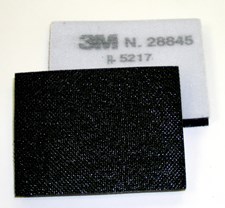Scotch-Brite™ Clean and Strip XT Pro Extra Cut Disc, XC-DC, A/O XCRS, Green, 4 in x 1 in x 1/4 in, 2 Ply Shaft Mount, 10 per case
-1
Scotch-Brite™ Clean and Strip XT Pro Extra Cut Disc, XC-DC, A/O XCRS, Green, 4 in x 1 in x 1/4 in, 2 Ply Shaft Mount, 10 per case

Technical Specifications
- Quickly removes heavy rust, thick paint, corrosion and cleans welds
- Aluminum oxide mineral aggressively removes top layer and cleans to the bare metal underneath
- High conformability provides a larger contact patch for faster removal rates
- High-strength fiber resists chunking and performs well on edges
- Resists loading for consistent cutting action
- High speed rating and low vibration
Scotch-Brite™ Clean and Strip XT Pro Extra Cut Disc features aluminum oxide abrasive mineral incorporated into an open nylon web. It is designed to remove heavy rust, thick paint and corrosion while also scratching the base material underneath, which can save you time. The highly conformable, high-strength fibers resist chunking and loading, and they perform well on edges.
Save Time with Aluminum Oxide
We designed our Scotch-Brite™ Clean and Strip XT Pro Extra Cut Disc with aluminum oxide abrasive mineral because of its ability to remove heavy coatings and simultaneously scratch and clean to the bare metal underneath without leaving divots. This means that operators can remove a coating from a workpiece and get it ready for welding or adhesive application with the same disc – saving the time of switching abrasives.
Spongy Web, Sharp Mineral
To engineer our Scotch-Brite™ Clean and Strip XT Pro Extra Cut Disc, aluminum oxide mineral is combined with non-woven nylon fibers using resin. Aluminum oxide is a very hard mineral that delivers a high cut rate, commonly used in high-pressure applications like cutting and weld removal. The resin bond strengthens the fiber web and allows it to gradually break down to reveal new fibers and sharp mineral – delivering a consistent cut over the life of the abrasive. The combination of fiber strands, resin and abrasive mineral forms a thick, open web. Gaps in the web allow swarf to escape, minimizing loading of the abrasive.











